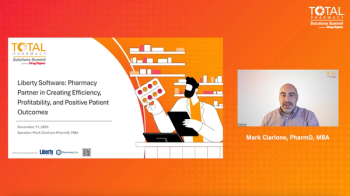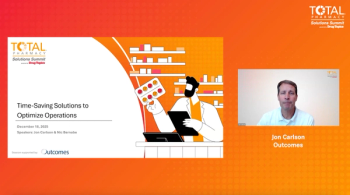
Much still unknown about Medicare Part D
Medicare prescription rules are final, but we won't know how the system works until it is thrown into the real world, said a former Department of Health & Human Services policy official who did early work on the program. It is there that the drug plans will strategize to make money and the Centers for Medicare & Medicaid Services will attempt to maintain oversight.
Medicare prescription rules are final, but we won't know how the system works until it is thrown into the real world, said a former Department of Health & Human Services policy official who did early work on the program. It is there that the drug plans will strategize to make money and the Centers for Medicare & Medicaid Services will attempt to maintain oversight.
For example, Congress anticipated that prescription drug plans (PDPs) would try to control costs by using closed formularies to restrict the use of drugs not on their lists. So noted Jack Hoadley, Ph.D., who until 2002 headed the Division of Health Financing Policy in HHS' Office of Planning & Evaluation. But there are still questions on how many plans would use closed formularies and what they would look like, Hoadley added, noting that the nation does not have a lot of experience with private-sector closed formularies.
Currently, while some closed formularies are used in Medicare managed care plans, state Medicaid plans, and the Department of Veterans Affairs, over 90% of commercial plans cover all drugs, Hoadley said. On the other hand, many private plans use financial incentives for patients to choose certain drugs, he said. Since plans will compete for beneficiaries, some may decide to use open formularies with some kind of cost sharing, while others may decide to attract beneficiaries by tightening formularies in order to lower costs and thus cut beneficiaries' co-insurance costs.
Hoadley went on to observe that the plans have room to play, with the requirement that beneficiaries pay an average 25% co-insurance on up to $2,250 of their costs. The law says plans can vary that rate if the cost sharing remains an actuarial equivalent, based on numbers and expected behaviors. Theoretically, a plan could have tiers of 5%, 20%, and 90% cost sharing. "There is really nothing to restrict, other than this averaging process of actuarial equivalence," explained Hoadley.
In contrast to closed formularies, cost sharing is a practice with significant private-sector experience. "Some two-thirds or more of private-sector plans use tiered cost-sharing," Hoadley noted, and some have even expressed interest in a four-tier arrangement.
Cost sharing is another area where CMS policing is a big question. A plan must have an actuary attest that its arrangement is equivalent to the 25% co-insurance. CMS has indicated it would look closely at how this is done.
In addition, said Hoadley, "the actuarial equivalency standard does not have to be met in every single drug class. And the question is, Would there be some drugs where there would be no lower-tiered costs?" Should there be certain types of tiering restricted? "And what about the use of 80% to 90% cost sharing? That might be like not covering the drug at all."
Another unknown is how plans will use the practice of prior authorization, because the law does not particularly restrict its use, Hoadley said. Prior authorization, he noted, could be used to enforce a formulary, or as a requirement for some higher-tier drugs, in addition to plans' cost-sharing tactics. Theoretically, the nondiscrimination protection would also apply to prior authorization. However, he said, CMS might have difficulty tracking day-to-day authorization practices.
Another layer of unknowns, said Hoadley, relates to the pharmacy and therapeutics committees that drug plans must set up. The P&T panels must include practicing pharmacists, physicians, and an expert in geriatric care. They must have at least one physician and one pharmacist who are independent of both the plan and the manufacturers. The committees are supposed to have binding review on what the plans cover. But their views on what tier to put drugs in or other cost-management tools are more advisory in nature. "How this would play remains to be seen," he commented.
Newsletter
Pharmacy practice is always changing. Stay ahead of the curve with the Drug Topics newsletter and get the latest drug information, industry trends, and patient care tips.











































































































































































































